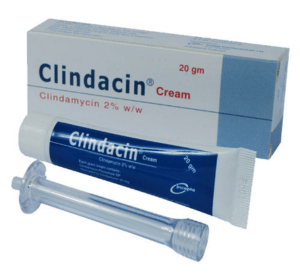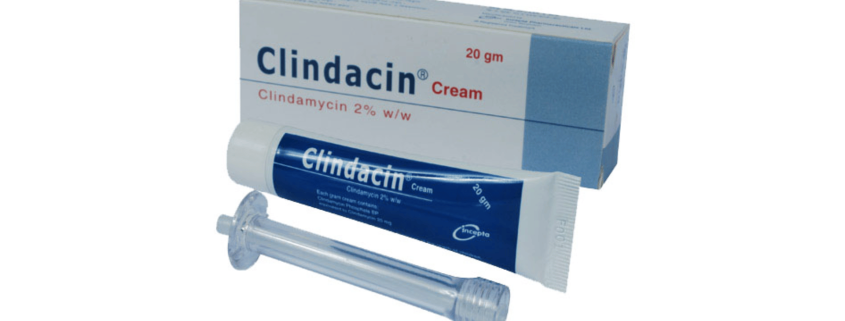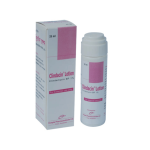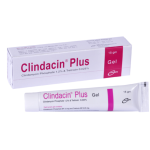Clindacin Cream(Clindamycin)

Therapeutic Group: Skin
Presentation
Each gram cream contains Clindamycin Phosphate BP equivalent to Clindamycin 20 mg.
Description
Clindamycin Phosphate is a water soluble ester that derived from the parent antibiotic Lincomycin. Clindamycin inhibits bacterial protein synthesis by binding preferentially to the 50s ribosomal subunit and affects the process of peptide chain initiation. In vitro Clindamycin is active against most strains of the following organisms that have been reported to be associated with bacterial vaginosis:
– Bacteroides spp.
– Gardnerella vaginalis
– mMobiluncus spp.
– Mycoplasma hominis
– Peptostreptococcus spp.
Indications
Clindacin cream is indicated in the treatment of bacterial vaginosis. Clindacin cream can be used to treat non-pregnant women and pregnant women during the second and third trimester.
Dosage & Administration
One applicator full (approximately 5 gram) intravaginally at bedtime for 7 consecutive days. In patients in whom a shorter treatment course is desirable, a 3 day regimen has been shown to be effective.
Side Effects
Clindamycin may results the following side effects. Genital tract: vaginitis, vulvo-vaginal irritation Central nervous system: dizziness, headache, vertigo.Gastro-intestinal: heartburn, nausea, vomiting, diarrhea, constipation, abdominal pain. Dermatological: rash, exanthema. Hypersensitivity: urticaria.
Precautions
The patient should be instructed not to engage in vaginal intercourse, or use other vaginal products during treatment with this product. This cream contains mineral oil that may weaken latex or rubber products such as condoms or vaginal contraceptive diaphragms. Therefore, use of such products within 72 hours following treatment with Clindacin cream is not recommended.
Clindacin cream is not recommended in children under 12 years of age.
Use in Pregnancy & Lactation
There are no adequate and well-controlled studies in pregnant women during the first trimester of pregnancy. This drug should be used during the first trimester of pregnancy only if clearly needed. There is no restriction to use Clindacin cream during the second and third trimester.
It is not known if clindamycin is excreted in breast milk following the use of vaginally administered Clindamycin phosphate. However, orally and parenterally administered Clindamycin has been reported to appear in breast milk.
Over Dose
Intravaginal overdose is not possible. Accidental ingestion of the product could be accompanied by effects related to therapeutic levels of oral clindamycin.
Storage
Store the tube below 25 °C
Commercial Pack
Each tube contains 20 gm of Clindamycin cream.



